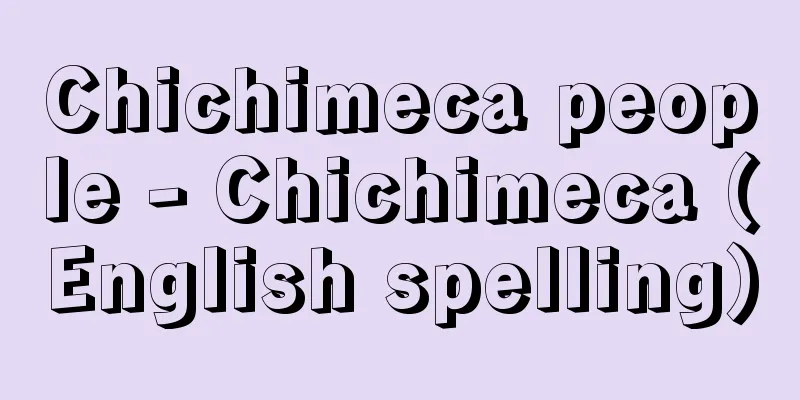Ohara school

|
It is one of the three major schools of ikebana, along with Ikenobo and Sogetsu. It began in 1912 (Meiji 45) when Ohara Unshin, who left Ikenobo, held the first Japanese-style ikebana exhibition at Mitsukoshi in Osaka. This was the first ikebana exhibition in Japan, and the first time a department store was used as a venue for an exhibition. When fresh flowers, which arose in the Edo period, became standardized and lost their freshness, ikebana with a focus on color using a water basin was received by the public as a novel style that responded to the tastes of the era from the end of the Meiji period to the Taisho period, when Western-style living was becoming more widespread, and created a moribana boom. The second Koun, who succeeded Unshin, was a man of great business talent, established standards for flower forms and teaching methods, and organized the art by establishing research institutes such as the Futaba-kai (for training instructors) and the Benibana-kai (for hobby education). In particular, the school actively trained female instructors, which helped it quickly rise to become a major school, eventually coming to be known as Ohara-ryu Seiheika, and in a short space of time establishing a solid Iemoto system. Later, the third head of the school, Houn, played an active role as one of the leaders of the Ikebana world after the Second World War, raising the reputation of the Ohara school to the present day. The Ohara School, which paved the way for the creation of modern ikebana in the late Meiji period, has always made the creation of new works and close connections with the masses its motto, and has branches overseas as well, aiming to expand. In 1954 (Showa 29), it built the Ohara School Hall in Tokyo and became a foundation, and in 1987 it built the Ohara School Headmaster Hall and Moribana Memorial Hall in Kobe, and in 1987 it established an old-age pension system for instructors, among other organizational activities. [Hojo Akinao] Source: Shogakukan Encyclopedia Nipponica About Encyclopedia Nipponica Information | Legend |
|
池坊(いけのぼう)、草月流とともに三大いけ花流派の一つ。池坊から独立した小原雲心が、1912年(明治45)、第1回国風式(こくふうしき)盛り花展を大阪・三越において開いたことに始まる。これは日本最初の盛り花展であり、百貨店を花展会場に使用した初めでもある。江戸時代におこった生花(せいか)が定型化して新鮮さを失ったときに、水盤を用いての色彩本位のいけ花は、洋風生活が普及しつつあった明治末から大正にかけての時代の好みに即応したいけ花として、斬新(ざんしん)な印象をもって世間に迎えられ、盛り花ブームをつくった。雲心の跡を継いだ2世光雲は経営の才に富み、花型の規格や教授方式を整え、二葉会(教授者養成)、紅花(べにばな)会(趣味教養)の研究機関をおいて組織化を図った。とくに女性の教授者を積極的に養成したことも力あって、一躍大流派にのし上がり、いつか小原流盛瓶花(せいへいか)とよばれるようになり、短期間のうちに確固たる家元制度も確立した。その後、3世豊雲は第二次世界大戦後のいけ花界のリーダーの一人として活躍し、小原流の名を高め今日に至っている。 明治後期における近代いけ花創始の道を開いた小原流は、つねに新しい作品の創造と大衆への密着をモットーにし、外国にも支部をもち、伸張を目ざしている。1954年(昭和29)東京小原会館を建て財団法人とし、62年には神戸に小原流家元会館と盛花記念館を建設し、67年には教授者のための老齢年金制度を設立するなど組織的活動を行っている。 [北條明直] 出典 小学館 日本大百科全書(ニッポニカ)日本大百科全書(ニッポニカ)について 情報 | 凡例 |
Recommend
Synodos
The term synod is a permanent assembly of bishops...
Enemy Father - Kyujitsufu
…A painter active in Suzhou, China, during the mi...
Greeley, Horace
Born: February 3, 1811, Amherst, New Hampshire Die...
Academia dei Lincei - Academia dei Lincei
…The Italian academies that sprang up in the late...
Activity analysis
It is an analytical method used when considering ...
Evanescent Waves - Evanescent Waves
A special type of electromagnetic wave that is ge...
Kyuutai - Kyuutai
One of the robes of a monk. Gate site Monzeki Also...
Fingerprint - Simon
Various patterns (patterns meaning fine patterns)...
Male homosexuality
〘 noun 〙 ("nan" is the go-on pronunciati...
Maki (English spelling)
The Maquis was the core of the resistance movement...
Ponax quinquefolia (English spelling) Ponaxquinquefolia
… [Yoshihiro Matsumiya]. … *Some of the terminolo...
Dakusuikei
It is the longest river in Taiwan, flowing west t...
Advice for Learning - Advice for Learning
This is the most famous book of enlightenment wri...
Mirounga angustirostris (English spelling) Miroungaangustirostris
… Seal [Yasuhiko Naito]. . . *Some of the termino...
Betatron - Betatron (English spelling) betatron
A device that accelerates electrons using an elec...









